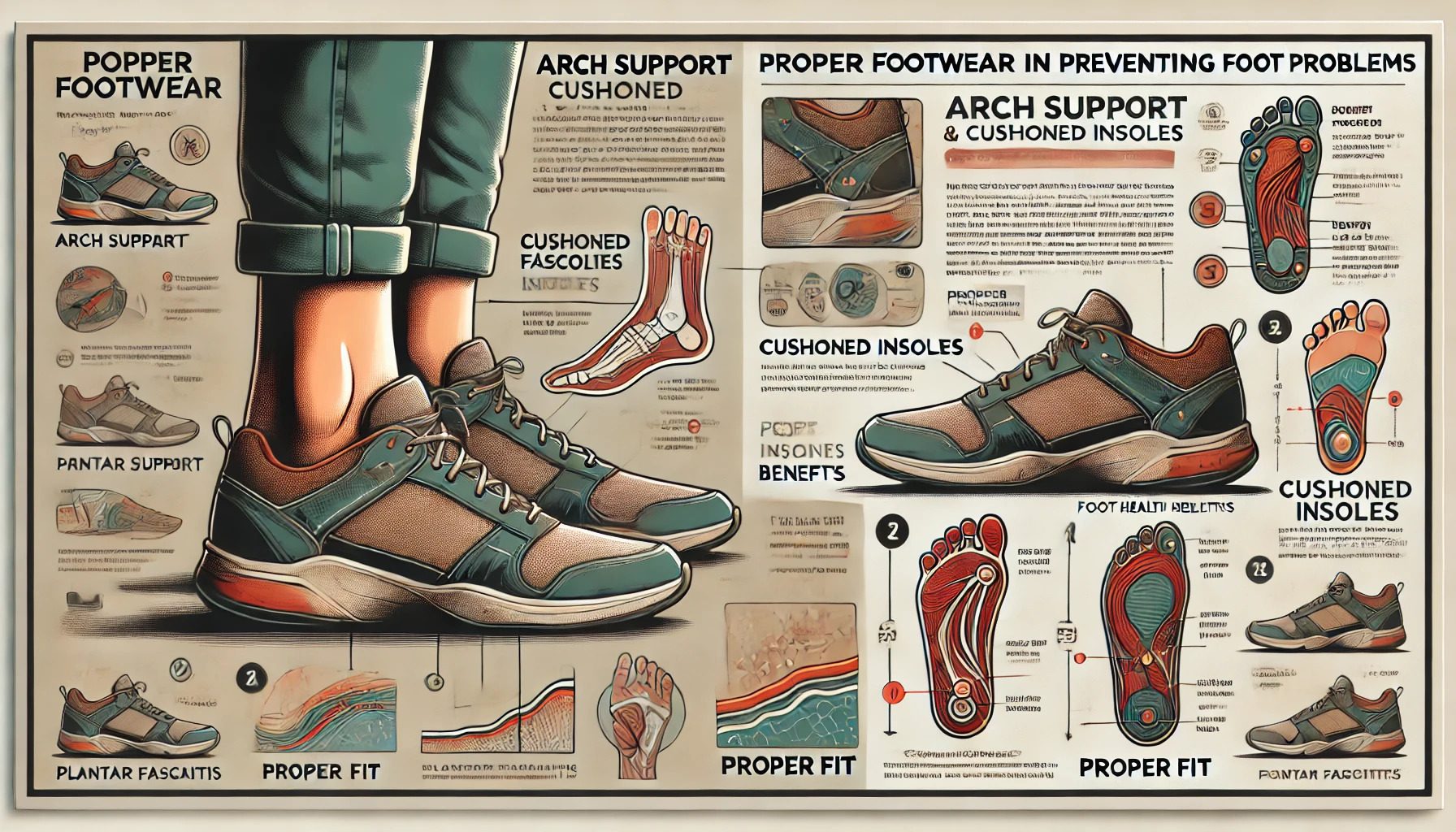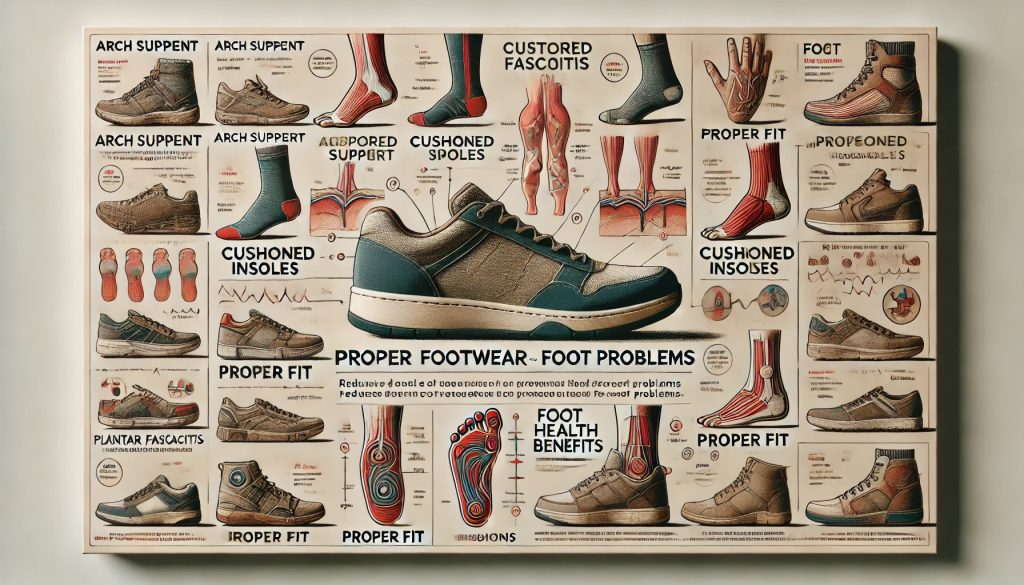
30 Jul The Role of Proper Footwear in Preventing Common Foot Problems
Introduction
Choosing the right footwear is essential not only for comfort but also for preventing a myriad of foot problems. Whether you’re walking, running, or standing for long periods, the shoes you wear play a crucial role in maintaining foot health. In this article, we’ll explore how proper footwear can prevent common foot issues like bunions, plantar fasciitis, and more.
Why Proper Footwear Matters
Foundation of Foot Health
Our feet bear the entire weight of our bodies and are involved in almost every movement we make. Wearing the right shoes provides a solid foundation, ensuring proper alignment and reducing the risk of injury.
Preventing Strain and Injury
Ill-fitting shoes can cause strain on various parts of the foot, leading to pain and long-term issues. Proper footwear distributes weight evenly and supports the natural shape of the foot, preventing undue stress on muscles and joints.
Common Foot Problems and How Shoes Can Help
Bunions
Bunions are bony bumps that form on the joint at the base of your big toe. They can be incredibly painful and are often exacerbated by narrow, tight shoes.
- Solution: Shoes with a wide toe box allow your toes to spread out comfortably, reducing pressure on the bunion.
Plantar Fasciitis
This condition involves inflammation of the plantar fascia, a thick band of tissue that runs across the bottom of your foot. It causes heel pain, especially in the morning.
- Solution: Supportive shoes with good arch support and cushioning can alleviate pressure on the plantar fascia, providing relief from pain.
Flat Feet
Flat feet occur when the arches of the feet collapse, causing the entire sole to touch the ground. This can lead to pain and problems with alignment.
- Solution: Orthopedic shoes with strong arch support can help maintain the foot’s natural curve, reducing pain and improving alignment.

Features to Look for in Proper Footwear
Arch Support
Good arch support is crucial for maintaining the natural curve of your foot, distributing weight evenly, and reducing strain on the plantar fascia.
Cushioning
Adequate cushioning absorbs shock and reduces impact on your feet, which is especially important for high-impact activities like running.
Breathability
Breathable materials help keep your feet dry and comfortable, reducing the risk of fungal infections and blisters.
How to Choose the Right Shoes for Your Needs
Assess Your Foot Type
Understanding whether you have flat feet, high arches, or neutral arches can help you choose shoes that provide the right support.
Consider Your Activities
Different activities require different types of support. Running shoes, for example, are designed to handle the repetitive impact of running, while walking shoes focus on arch support and cushioning.
Get Professionally Fitted
A professional fitting can help you find shoes that fit perfectly, preventing issues caused by ill-fitting footwear.
Conclusion
Wearing the right shoes is fundamental to preventing common foot problems and maintaining overall foot health. By choosing footwear that offers proper support, cushioning, and fit, you can avoid issues like bunions, plantar fasciitis, and flat feet. Invest in good shoes, and your feet will thank you.
Check out our Facebook for more info!
FAQs
Can wearing the wrong shoes cause permanent foot damage?
Yes, consistently wearing ill-fitting shoes can lead to long-term foot issues and permanent damage.
How often should I replace my shoes?
It’s generally recommended to replace shoes every 6-12 months, or when they show signs of wear and no longer provide adequate support.
Are custom orthotics worth the investment?
Custom orthotics can be beneficial for individuals with specific foot problems, offering tailored support and comfort.
Can high heels cause foot problems?
Yes, regularly wearing high heels can lead to issues like bunions, hammertoes, and plantar fasciitis due to the unnatural position they force your feet into.
What’s the best way to break in new shoes?
Gradually wear them for short periods, increasing the time as your feet adjust. Using shoe stretchers or wearing thick socks can also help.

